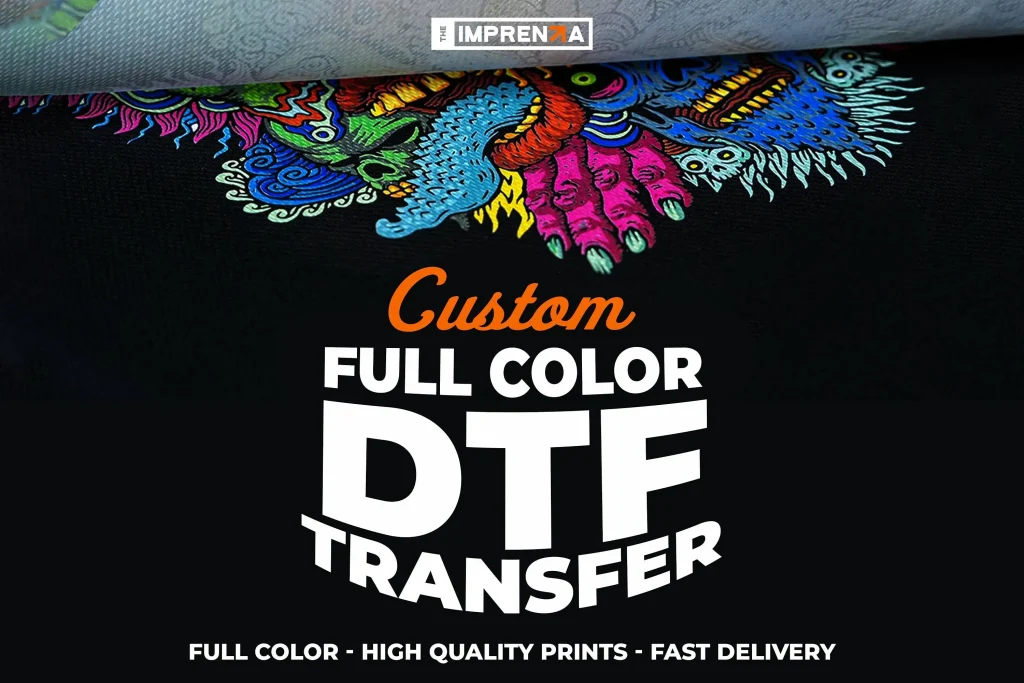DTF transfers have transformed how designers approach garment decoration, delivering vibrant, durable results with greater versatility for brands of all sizes and across multiple markets. In this guide, explore direct-to-film printing, its workflow, and how it stacks up against other methods in today’s print shops, studios, and home setups. You’ll find practical insights on the DTF printing guide, DTF inks and powders, and color management, with additional notes on color accuracy and consistency. The article also covers DTF setup and troubleshooting, so you can establish a reliable process and diagnose common issues, with built-in diagnostics to reduce downtime. Finally, it highlights DTF substrates and care, ensuring durability through proper material choices and post-treatment maintenance, and offering tips for long-term performance.
A film-based garment transfer workflow uses printed designs on a special substrate, then fuses with fabric via heat and adhesive powder. Leaning on the same core concept, industry professionals describe it as a transfer-on-film technique that builds color with multiple layers. Practically, this approach blends pigment inks on a coated film with a powdered adhesive, delivering durable, soft-hand graphics on diverse fabrics. Understanding this ecosystem through terminology such as substrate preparation, curing, and heat-press parameters helps align expectations with outcomes.
DTF transfers: Mastering the direct-to-film printing workflow
DTF transfers rely on a precise direct-to-film printing workflow that blends film-based imaging with heat-activated adhesion. In practice, mastering this workflow means understanding how to design for film, print on pigment-based inks, coat with adhesive powder, cure the coating, and press onto fabric with the right temperature, time, and pressure. For small shops and crafters, a well-tuned workflow translates to consistent color, repeatable results, and fewer reprints, which is the core promise of a true DTF printing guide. From the first design concept to the final press, each step matters, and aligning those steps with reliable equipment makes the process scalable.
To optimize outcomes, focus on the interplay between direct-to-film printing results and post-print handling. The choice of DTF inks and powders directly affects brightness, opacity, and wash durability, while DTF substrates and care influence how the finished transfers perform over time. Build a simple testing routine that compares warm- versus cold-peel methods, evaluates powder adhesion, and verifies color fidelity across fabrics. When you treat every stage as a repeatable procedure, you gain confidence to meet customer expectations and reduce costly trial-and-error cycles.
DTF inks and powders: Achieving vibrant color and strong adhesion
DTF inks and powders are the heart of every durable transfer. Selecting a reliable pigment ink set and a white ink layer helps achieve crisp edges, solid coverage, and true color on both light and dark fabrics. A well-balanced ink mix reduces color shifting after heat pressing, while the white base provides the foundation for vibrant on-dark results. As part of the DTF printing guide, paired inks and powders should be tested together to confirm adhesion, opacity, and wash performance before you scale up production.
Powder adhesive quality and curing are equally critical. Inconsistent powder application or under-cure can cause peeling, cracking, or powder shedding after multiple washes. Effective DTF setup and troubleshooting routines include testing powder flow, calibrating curing times, and validating that the adhesive bonds securely to the printed film during transfer. By documenting the recommended cure temperature and duration for each material you use, you create a dependable pipeline that translates to repeatable results across runs and customers.
DTF setup and troubleshooting: Optimizing your printer and press
Setting up a DTF workflow begins with your printer, film, and heat press. Start with a baseline configuration for your printer that matches the ink set, then proceed to calibrate the white ink layer and color inks separately. Using the DTF printing guide you can lock in the best print mode, DPI, and color management settings for crisp edges and accurate color, while keeping an eye on white ink density on dark garments. This emphasis on setup reduces surprises during production and shortens the path from design to finished transfer.
Troubleshooting is part of everyday production, and a structured approach helps you diagnose issues quickly. Common checks include ensuring uniform powder adhesion, verifying curing times, and confirming proper heat press pressure across the entire sheet. If you experience edge bleed, misregistration, or poor adhesion, revisit the printing order, curing step, and transfer temperature. Maintaining a log of adjustments and outcomes will accelerate problem solving and prevent recurring defects in future batches.
DTF substrates and care: Fabric choices and long-term performance
Choosing the right fabrics is essential for durable DTF transfers. Cotton and cotton blends remain the most forgiving, but many poly blends and performance fabrics can deliver excellent results with the right settings. As part of DTF substrates and care guidelines, test each fabric type for adhesion, color vibrancy, and wash durability before committing to a full run. Document which fabrics respond best to your heat press temperature, dwell time, and pressure to build a practical fabric library for future projects.
Care and storage are also part of long-term performance. Proper handling of transfer films, powders, and finished garments reduces variability between batches and extends the life of your designs. Include a short care section on your product pages to educate customers on washing and drying guidelines that preserve color and texture. Regularly re-test your setup when you introduce new fabrics or modify your process to maintain consistent results across all substrates.
Color management in DTF transfers: Reproducing colors reliably
Color management is the backbone of professional DTF transfers. A successful approach combines ICC profiles, monitor calibration, and print settings that translate on-screen colors into accurate fabric results. Keep the focus on color fidelity when using direct-to-film printing by validating color accuracy across fabrics and under different lighting. The DTF printing guide emphasizes printing a color test chart on each substrate to fine-tune gamma, saturation, and contrast for your common designs.
Color consistency also depends on how you handle the white ink base and color layers. Managing layer order, ink density, and drying times reduces color shifts after washing. As you grow, maintain a library of successful color profiles for each fabric type and film to speed up future projects. When color management is in place, you’ll enjoy predictable results and fewer reprints, even with complex designs and gradients.
Troubleshooting common DTF transfers issues and fixes
Even experienced printers encounter issues in DTF transfers, but a systematic approach makes fixes faster. Start with adhesion problems by checking powder curing, transfer temperature, and pressure uniformity; poor adhesion is often a sign that curing time needs adjustment. If whites don’t show up well on dark fabrics, reevaluate the white ink density and print order, and run a targeted test on a representative dark garment. These checks are central to DTF setup and troubleshooting routines.
Edge bleeding, cracking, or powder shedding point to variations in fabric choice, heat, and handling after printing. Revisit your substrate testing, confirm you’re using the recommended dwell time, and verify that you’re peeling under the correct cooling conditions. Keeping a troubleshooting log and adjusting one variable at a time helps you isolate root causes without compromising other transfers. Over time, these disciplined fixes contribute to higher yields and steadier performance across your DTF transfers business.
Frequently Asked Questions
What are DTF transfers and how does direct-to-film printing work?
DTF transfers are designs printed onto a PET film using pigment-based inks, then coated with an adhesive powder and heat pressed onto fabric. Direct-to-film printing creates the image on film first, enabling sharp detail and vibrant color—especially on dark fabrics. This process is a core part of DTF transfers and is explained in a DTF printing guide; it relies on DTF inks and powders for durability and consistent results.
How do I choose the right DTF inks and powders for different fabrics?
Choose pigment-based DTF inks with a white ink layer for best results on dark textiles, and ensure the powder adhesive cures properly. The right combination depends on fabric type, so test on a small swatch and follow DTF substrates and care recommendations to maintain adhesion and color fidelity.
What is the best DTF setup and troubleshooting workflow for reliable results?
A solid DTF setup starts with a printer configured for DTF inks, white ink, and transfer film, plus an even application of DTF powder and proper curing. Follow a DTF setup and troubleshooting approach: calibrate the printer, run test prints, and monitor curing, powder adhesion, and heat-press parameters. When issues occur, consult the guide’s troubleshooting steps to isolate color, adhesion, or edge problems.
Which substrates work best with DTF transfers and how should I care for them?
Cotton and cotton blends are the most reliable substrates for DTF transfers, though many synthetics can work with appropriate settings. Always test on each fabric type and follow DTF substrates and care guidance for washing and maintenance to preserve color and adhesion.
How can I manage color in DTF transfers to get consistent results?
Effective color management is essential for DTF transfers. Calibrate your printer, use ICC profiles when available, print test swatches, and account for white ink on dark fabrics in your workflow. A consistent color strategy, as outlined in the DTF printing guide, helps achieve predictable results across runs.
What are common DTF transfer problems and how do I troubleshoot them?
Common issues include poor adhesion, white ink issues on dark fabrics, color bleed, cracking, and powder shedding. Troubleshoot by checking curing time, ensuring even powder application, validating transfer temperature and pressure, and re-testing with small batches. Following DTF setup and troubleshooting steps helps isolate the cause and prevent reoccurrence.
| Aspect | Key Point |
|---|---|
| Focus keyword | DTF transfers |
| Related keywords | – direct-to-film printing – DTF printing guide – DTF setup and troubleshooting – DTF inks and powders – DTF substrates and care |
| Post title | DTF transfers: Mastering direct-to-film printing 101 |
| Meta description | DTF transfers: a complete guide to mastering direct-to-film printing, including setup, inks and powders, substrates, color management, and troubleshooting tips. |
| Blog post overview |
|
Summary
DTF transfers offer a flexible, scalable approach to fabric decoration, blending the precision of film-based printing with the durability needed for daily wear. This descriptive summary highlights the guide’s core areas: selecting the right inks and powders, handling the transfer film, optimizing heat pressing, choosing suitable substrates, and implementing robust color management. With a consistent workflow and ongoing testing, practitioners can achieve high-quality DTF transfers that meet customer expectations while keeping production efficient and cost-effective.



